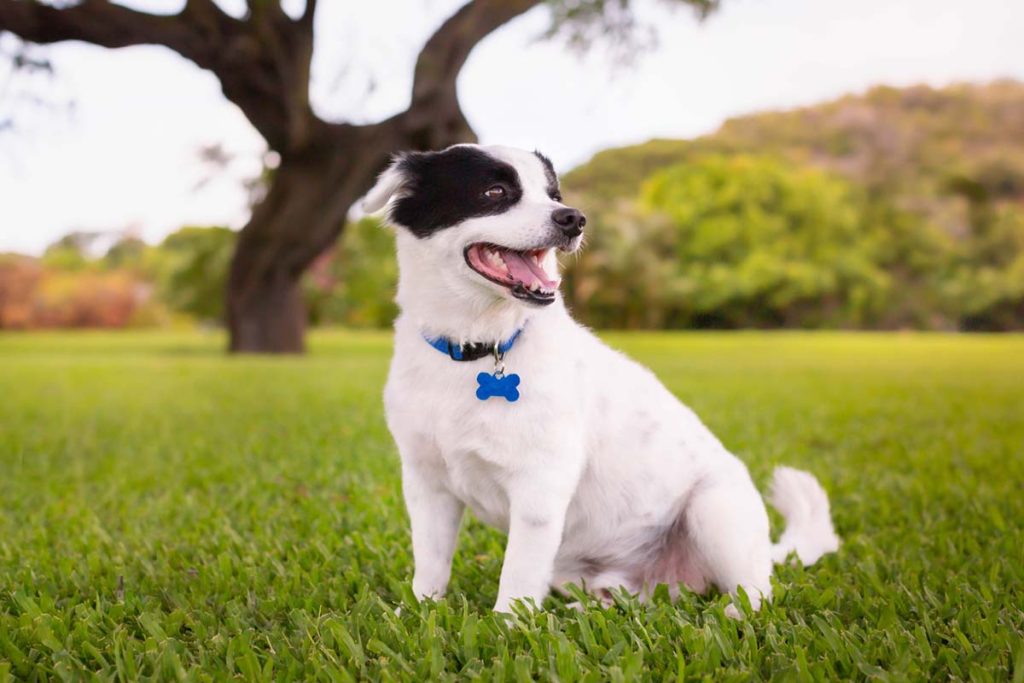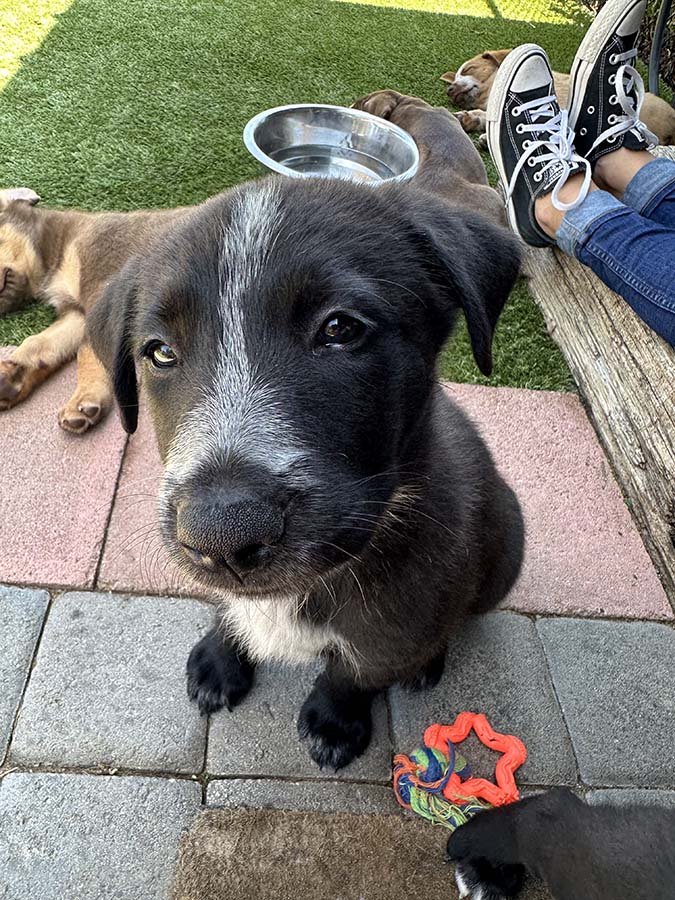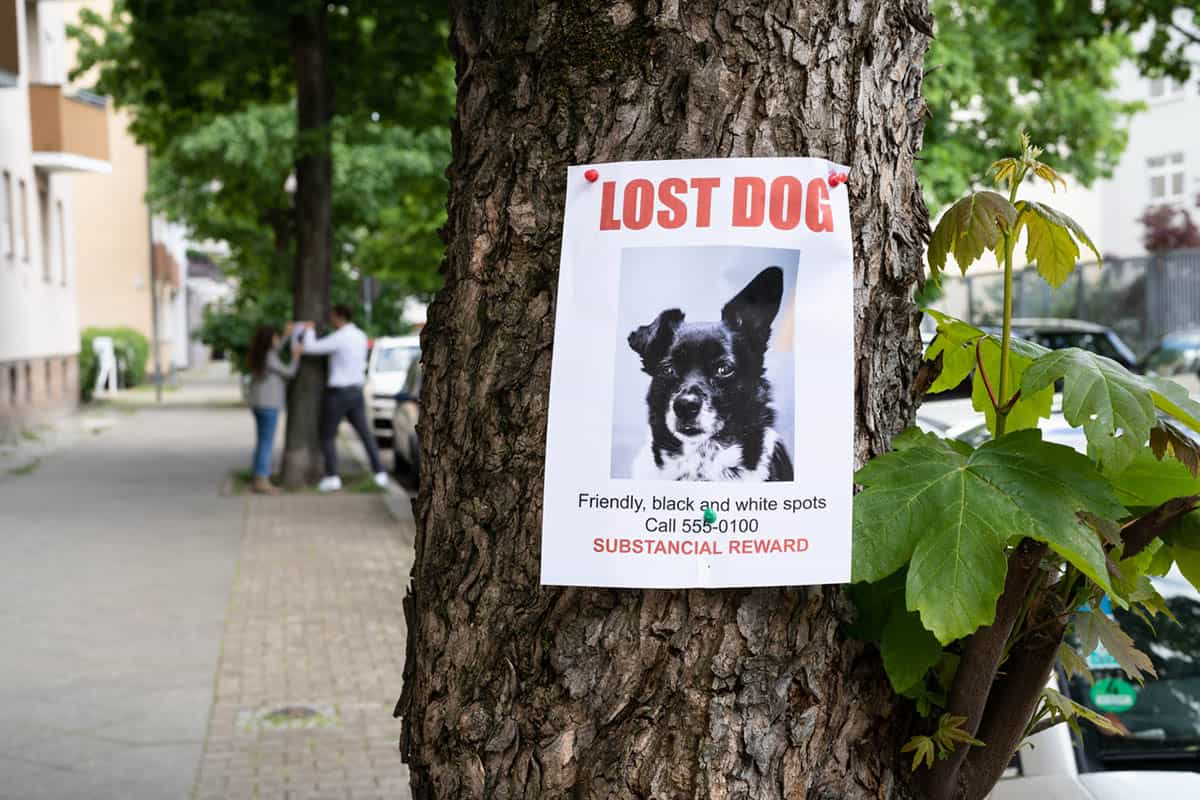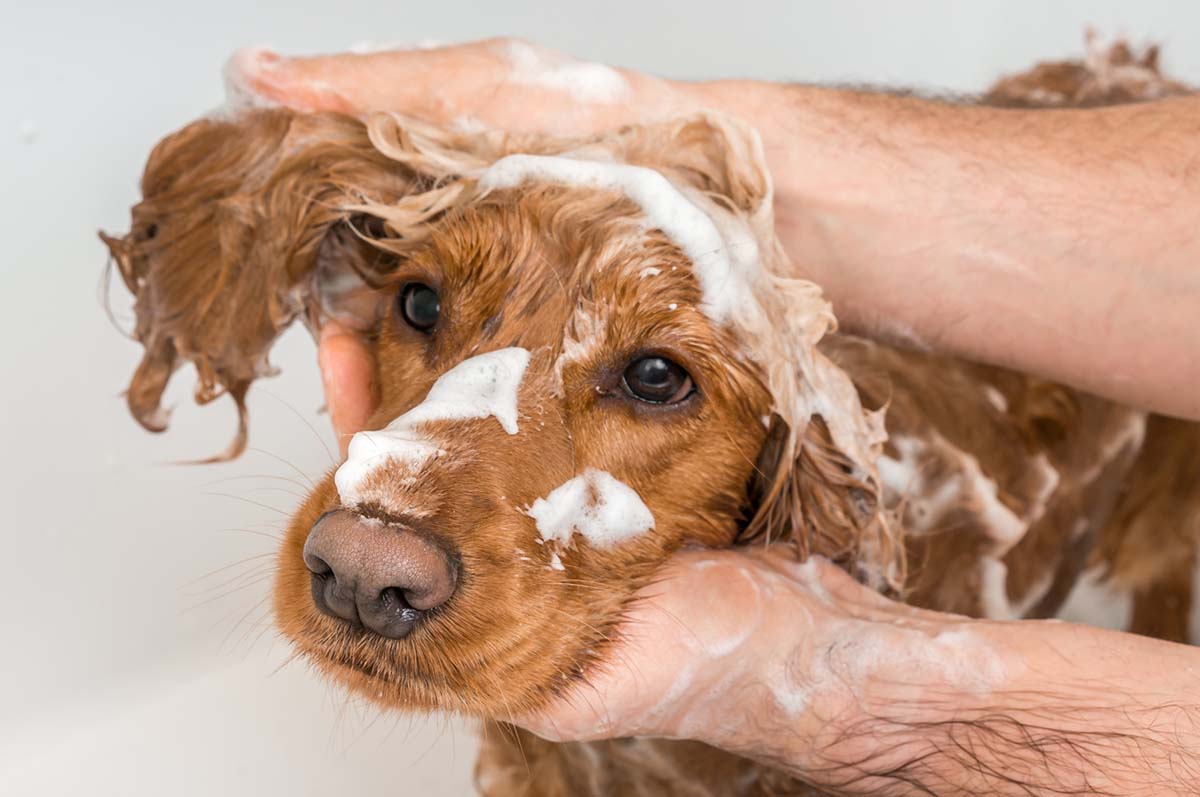How to Find a Lost Dog
There are so many ways a dog can escape. Read on for a variety of avenues you can take to find a lost dog and bring them home safely.
My niece looked at me and asked, “Where’s Baggins?” I answered, “He’s right here,” and turned to where my fluffy American Eskimo pup had been sitting thirty seconds earlier.
But he wasn’t there.
I blinked, called “Baggins,” and looked around the yard. But there was no sign of my cuddly Eskie with the duster-like tail. I rushed to the sidewalk as my heart beat faster, my panic rose, and my eyes roved around the area.
In hindsight, he should have been safely upstairs in the apartment with the door closed.
But the night was balmy; we had family visiting, and I didn’t realize how much the New Year’s Eve fireworks would spook him.
Fortunately, we lived in a small town, and it was easy to spot a fluffy white dog running down the street. A neighbor scooped him up, and thanks to the dog collar with our phone numbers, we retrieved him within minutes.
There are so many ways your dog can escape.
- Someone leaves a door open
- Your pup digs under the fence
- Your dog slips the collar while you’re on a walk
- Your pup barrels out the door while you’re unloading groceries
Just to name a few.
Some of these escapes are a natural curiosity. Your dog wants to explore the neighborhood. Other times, it’s fear-based — fireworks, a loud storm, an aggressive dog on a walk.
What can you do if your dog gets away?
How to Find a Lost Dog

The ASPCA conducted a five-year study and found that 49% of pet parents found their dog when searching the neighborhood. 90% of those lost pets were reunited with their pet parents within the first 24 hours. 15% of those dogs wore an ID tag or were micro-chipped.
If your dog goes missing, ask yourself if there are doggie friends they might have gone to visit? Was there a scary storm that might have sent your pup into hiding under a nearby porch or into a garage?
Here’s how to speed up your chances of reuniting with your missing pet.
Up-to-Date Tags
This is one of the easiest ways to locate a missing dog. A collar with your address and phone number is the first thing someone looks for when trying to find a pup’s pet parents.
Check your dog’s tags. Are they legible, or has the engraving become so scratched it’s hard to read? If so, update them. It’s quick, easy, and inexpensive.
Microchip Your Dog
A microchip is a tiny electronic device inserted under your dog’s skin for identification purposes. This way, if your pup winds up at a shelter without any other identification, they may be able to scan your pup and find your contact information in a database.
Register with the Microchip Database
It’s important to know there are many pet microchip companies, so please complete the registration process.
- Ask your veterinarian which microchip company they used (and they may give you a pamphlet).
- Set up an account online and input your information and your dog’s identification number.
Once complete, you might find it useful to make a note on your phone or spreadsheet or wherever you keep important information. That way, if there’s an emergency, you can easily find the database and your dog’s identification number.
Remember, there is no national database of microchips, thanks to the Animal Welfare Act, which doesn’t regulate a national standard for microchips or scanners.
AirTag or GPS Collar
Just as you can track lost luggage with an AirTag, you can put one on your dog’s collar. This will work as a GPS to track your dog should he take himself on an unsupervised exploration.
However, a drawback to the AirTag is it doesn’t work without phone service, so if you live in a rural area without good coverage, it won’t work. Additionally, if other people aren’t around to pick up the AirTag and pass along the information, it won’t work.
A GPS collar can be a better option if you’re an Android user or want additional services like tracking your pet’s activity.
Post in Neighborhood Social Media Groups
Every neighborhood has online groups, and they’re GREAT places to alert the neighbors that Max is on the run. Lost and found pets get posted all the time.
Facebook groups, Next Door, Craigslist, and even Ring (the doorbell service) offer panicked pet parents a place to post photos of their best friend, add your phone number and address, and tag anyone you know nearby for help.
Most people are happy to help reunite lost dogs with their people.
While at it, you can alert nearby family members, too, even if they don’t live in the same neighborhood. Sometimes, pets wind up across town or in the nearby cities.
Make Fliers
Upload a photo of your dog with a short description and “LOST DOG” as a headline. Include your dog’s name, print them out, and post fliers around your area.
- Telephone poles
- Public Bulletin boards
- Grocery stores
- Pet groomers
- Veterinarians
- Pet stores
- Dog park
Pet people tend to know other pet people, so anywhere you can put your flyers where other dog folks will see them is better, and you can go door to door in your neighborhood.
You can also deliver them to your mail carrier, UPS, Amazon delivery driver, or anyone else who delivers to your neighborhood frequently. They’re in an excellent position to find a missing animal since they travel around the neighborhood.
Call Area Animal Shelters
Google “local animal shelters + town” and start calling because there could be multiple shelters. Call the shelters further away if a day or two passes without finding your pup. A healthy dog can travel miles away, assuming no one picked them up and drove them to another area.
Call Animal Control Agencies
Many lost animals wind up in the “dog pound.” You can google animal control agencies + your town and start calling them.
Contact Rescue Groups
Do you have a purebred or a dog that looks like a Golden Retriever or another popular breed? Reach out to your area rescue groups, as people often notice such dogs and try to return them to their families.

Be Aware of Scams
Sadly, some people will reach out to collect a reward but have no information about your lost dog. Please be aware of potential scammers. If someone calls and says they found your lost dog, ask them to send a current picture. Never wire someone money or send gift cards, as those are common scams.
You can look for a reputable pet detective through a lost animal directory.
Don’t panic; there are many ways you can help your dog find his way home.
Help Your Dog Find His Way Home
Dogs have an excellent sense of smell, and if the weather is nice and your dog is within a few miles, they may be able to smell their way home.
Help your pup sniff their way back by putting their bed and favorite toys outside. You can add a well-worn shirt or something else that smells like you. Add food and water, as they may be hungry if they’ve been on an adventure.
Don’t Give Up
There are thousands of heartwarming tales of lost pets found weeks, months, or even years later. Some pets follow scent trails to make their way home.
Give your pup the best chance to make it home by ensuring it has a collar with up-to-date tags, microchip your floof, and consider a GPS tracker if they are a flight risk.
If your pet does go missing, share information about your lost dog through flyers, neighborhood Facebook groups, and other social media channels. When you blanket the area with lost dog alerts, you create the opportunity for lost dog sightings and increase your chances of finding your dog quickly.
Many dogs don’t leave the neighborhood, so get out there and talk to your neighbors. Your dog could be closer than you think.








